Splenocyte apoptosis and autophagy is mediated by interferon regulatory factor 1 during murine endotoxemia
- PMID: 22266972
- PMCID: PMC3328635
- DOI: 10.1097/SHK.0b013e318249cfa2
Splenocyte apoptosis and autophagy is mediated by interferon regulatory factor 1 during murine endotoxemia
Abstract
Sepsis-induced lymphocyte and dendritic cell apoptosis contributes to immunosuppression, which results in an inability to eradicate the primary infection as well as a propensity to acquire new, secondary infections. Another cellular process, autophagy, is also activated in immune cells and plays a protective role. In the present study, we demonstrate that interferon regulatory factor 1 (IRF-1) regulates both immune cell apoptosis and autophagy in a murine endotoxemia model. Interferon regulatory factor 1 is activated at an early phase through a Toll-like receptor 4-dependent, myeloid differentiation primary response gene 88-independent manner in splenocytes. Furthermore, IRF-1 knockout (KO) mice are protected from a lethal endotoxemia model. This protection is associated with decreased apoptosis and increased autophagy in splenocytes. Interferon regulatory factor 1 KO mice experience decreased apoptotic cell loss, especially in CD4⁺ T lymphocytes and myeloid antigen-presenting cells. Meanwhile, IRF-1 KO mice demonstrate increased autophagy and improved mitochondrial integrity. This increased autophagy in KO mice is attributable, at least in part, to deactivation of mammalian target of rapamycin/P70S6 signaling--a main negative regulator of autophagy. Therefore, we propose a novel role for IRF-1 in regulating both apoptosis and autophagy in splenocytes in the setting of endotoxemia with IRF-1 promoting apoptosis and inhibiting autophagy.
Figures
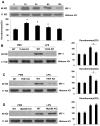
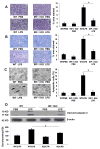
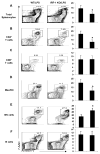
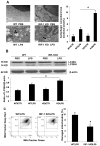
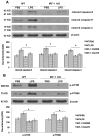
Similar articles
-
Interferon regulatory factor-1 regulates the autophagic response in LPS-stimulated macrophages through nitric oxide.Mol Med. 2012 Mar 27;18(1):201-8. doi: 10.2119/molmed.2011.00282. Mol Med. 2012. PMID: 22105605 Free PMC article.
-
Interferon regulatory factor-1 mediates the release of high mobility group box-1 in endotoxemia in mice.Chin Med J (Engl). 2013 Mar;126(5):918-24. Chin Med J (Engl). 2013. PMID: 23489802
-
T Cell-Intrinsic Interferon Regulatory Factor 1 Expression Suppresses Differentiation of CD4+ T Cell Populations That Support Chronic Gammaherpesvirus Infection.J Virol. 2021 Sep 27;95(20):e0072621. doi: 10.1128/JVI.00726-21. Epub 2021 Aug 4. J Virol. 2021. PMID: 34346769 Free PMC article.
-
Regulation of lipopolysaccharide-induced inflammatory response and endotoxemia by beta-arrestins.J Cell Physiol. 2010 Nov;225(2):406-16. doi: 10.1002/jcp.22289. J Cell Physiol. 2010. PMID: 20589830 Free PMC article.
-
How autophagy controls the intestinal epithelial barrier.Autophagy. 2022 Jan;18(1):86-103. doi: 10.1080/15548627.2021.1909406. Epub 2021 Apr 27. Autophagy. 2022. PMID: 33906557 Free PMC article. Review.
Cited by
-
Dysregulated dendritic cells in sepsis: functional impairment and regulated cell death.Cell Mol Biol Lett. 2024 May 30;29(1):81. doi: 10.1186/s11658-024-00602-9. Cell Mol Biol Lett. 2024. PMID: 38816685 Free PMC article. Review.
-
Effects of anti-inflammatory vagus nerve stimulation in endotoxemic rats on blood and spleen lymphocyte subsets.Inflamm Res. 2014 Aug;63(8):683-90. doi: 10.1007/s00011-014-0741-5. Epub 2014 May 7. Inflamm Res. 2014. PMID: 24802890
-
Modulating T Cell Responses via Autophagy: The Intrinsic Influence Controlling the Function of Both Antigen-Presenting Cells and T Cells.Front Immunol. 2018 Dec 14;9:2914. doi: 10.3389/fimmu.2018.02914. eCollection 2018. Front Immunol. 2018. PMID: 30619278 Free PMC article. Review.
-
Interferon Regulatory Factor-1 Mediates Alveolar Macrophage Pyroptosis During LPS-Induced Acute Lung Injury in Mice.Shock. 2016 Sep;46(3):329-38. doi: 10.1097/SHK.0000000000000595. Shock. 2016. PMID: 26939040 Free PMC article.
-
Novel CD11b+Gr-1+Sca-1+ myeloid cells drive mortality in bacterial infection.Sci Adv. 2020 Jan 22;6(4):eaax8820. doi: 10.1126/sciadv.aax8820. eCollection 2020 Jan. Sci Adv. 2020. PMID: 32010784 Free PMC article.
References
-
- Aneja R, Fink MP. Promising therapeutic agents for sepsis. Trends Microbiol. 2007;15(1):31–7. - PubMed
-
- Park BS, Song DH, Kim HM, Choi BS, Lee H, Lee JO. The structural basis of lipopolysaccharide recognition by the TLR4-MD-2 complex. Nature. 2009;458(7242):1191–5. - PubMed
-
- Hotchkiss RS, Swanson PE, Freeman BD, Tinsley KW, Cobb JP, Matuschak GM, Buchman TG, Karl IE. Apoptotic cell death in patients with sepsis, shock, and multiple organ dysfunction. Crit Care Med. 1999;27(7):1230–51. - PubMed
Publication types
MeSH terms
Substances
Grants and funding
LinkOut - more resources
Full Text Sources
Research Materials

